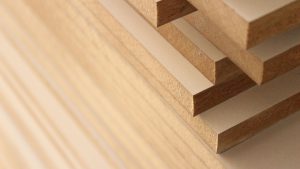Adhesive Products Business Startup: Key Insights and Advice

The adhesive products sector represents a dynamic industry, riding the wave of global trends like sustainable living, rapid industrialization, and increased focus on infrastructure and construction. With an expansive array of applications spanning from automotive to packaging, and textiles to furniture, adhesive products offer a promising avenue for investors.
This article will explore some of the best manufacturing business ideas in the adhesive product sector, emphasizing why startups should invest in this industry, given the current market size, trends, and future opportunities.
- Epoxy Resin Based Primer (Putty):
Reasons to Invest:
- High Durability: Epoxy resins provide a hard and durable surface, making them ideal for industrial coatings, flooring, and marine applications.
- Growth in Construction: With an increased focus on infrastructure and the construction industry, the demand for high-quality primers, such as epoxy-based ones, is set to rise.
- Leather Binder (Resin Based):
Reasons to Invest:
- Thriving Leather Industry: The leather industry is booming globally, requiring quality binders for leather processing and finishing.
- Sustainability: Resin-based binders are more sustainable than traditional chemical binders, offering eco-friendliness as an added advantage.
- Pigment Binders for Textile Printing:
Reasons to Invest:
- Fashion Trends: With fashion’s ever-changing dynamics, the demand for unique textile prints is evergreen.
- Technical Advancements: Innovations in textile machinery and digital printing necessitate advanced pigment binders.
- BOPP Adhesive Tapes:
Reasons to Invest:
- Packaging Growth: Biaxially oriented polypropylene (BOPP) tapes are essential for packaging. With e-commerce and retail industries growing, so is the demand for BOPP tapes.
- Versatility: These tapes have applications ranging from packaging to stationery.
- Pressure Sensitive Adhesives for BOPP Tapes (Acrylic Based):
Reasons to Invest:
- Strong Adhesion: Acrylic-based adhesives are renowned for their strong bonding properties, making them a top choice.
- Broad Applications: These adhesives are also used in labels, decals, and graphics, expanding their market reach.
- Guar Gum:
Reasons to Invest:
- Food Industry: Guar gum is a popular thickening agent in the food industry, particularly in bakery products and sauces.
- Oil & Gas: It’s used in hydraulic fracturing in the petroleum industry, further increasing its demand.
- Adhesive (Fevicol Type):
Reasons to Invest:
- Furniture Boom: With a growing real estate industry and urbanization trends, there’s a rise in furniture manufacturing, requiring such adhesives.
- Craft and DIY: The craft and DIY sector also heavily rely on such adhesives, ensuring steady demand.
- Urea Formaldehyde Resin (Powder):
Reasons to Invest:
- Wood Industry: Predominantly used as an adhesive in the wood industry, its demand will grow with the timber and furniture sectors.
- Durability: It offers resistance to moisture, making it perfect for plywood and particleboard.
- Alkyl Resin from Cotton Seed Oil:
Reasons to Invest:
- Green Revolution: Derived from renewable sources, these resins offer a sustainable alternative to synthetic ones.
- Diverse Applications: They serve various sectors like paints, inks, and rubber.
- Corrugated Carton Boxes Gum Powder (Tamarind Kernel Powder Base):
Reasons to Invest:
- Packaging Needs: The increasing need for packaging solutions ensures the demand for corrugated boxes and, subsequently, their adhesive needs.
- Natural Base: Being based on tamarind kernel powder, it’s eco-friendly and sustainable.
Market Analysis & Trends
The international adhesives market dimension was valued at USD 50 billion in 2019 and is forecasted to sign up a CAGR of over 5% between 2020 and 2026. The vital chauffeurs consist of:
- Sustainability: With global emphasis changing in the direction of lasting items, adhesive manufacturers are working towards environmentally friendly options, leading to ingenious products.
- Rapid Industrialization: As markets grow, their sticky needs expand, using opportunities in locations like vehicle, building, and product packaging.
- Technological Advancements: With development in chemical research, brand-new adhesive items with much better residential or commercial properties and applications are frequently emerging.
Visit this Page for More Information: Start a Business in Adhesives and Sealants Industry
Detailed Market Analysis
As we dig much deeper into the adhesive industry, different elements arise that represent its vastness and capacity.
Global Perspective:
Geographically, the Asia-Pacific region controlled the sticky market in 2019, with China, India, and Japan as the frontrunners. The region’s rise in production tasks, infrastructure development, and raising non reusable earnings are leading to greater usage of glue products. Europe complies with the Asia-Pacific, with Germany being the main contributor as a result of its robust vehicle industry. North America, with the U.S. at its core, likewise provides a substantial share, driven by its sophisticated manufacturing industries and surging construction industry.
Segment Analysis:
Different types of adhesives cater to varied applications:
- Reactive & Others: This segment held a dominant share in 2019. Products like epoxies, urethanes, and acrylics fall under this category. They’re pivotal in applications demanding high strength and durability.
- Hot Melts: These are gaining traction due to their quick-setting nature. Predominantly used in packaging, bookbinding, and the footwear industry.
- Water-Based: These are eco-friendly, catering to the rising demand for sustainable solutions. They have applications in packaging, construction, and woodworking.
Raw Material Analysis:
- Synthetic: Derived from petroleum feedstock, synthetic adhesives like vinyl acetate are prominent due to their cost-effectiveness.
- Natural: Obtained from organic sources like plants and animals. Products such as starch, dextrin, and casein glues are in this category. The drive towards sustainability is making natural adhesives a focal point of research and innovation.
End-Use Trends:
- Packaging: With the e-commerce boom, there’s an undeniable demand for adhesive solutions in packaging. Furthermore, the food and beverage industry requires specialized adhesive solutions.
- Construction: Urbanization and infrastructure projects globally ensure that adhesives for tiles, wallpapers, and insulation materials are always in demand.
- Automotive: Modern vehicle assembly requires adhesives for various parts, from interiors to the engine assembly.
Emerging Trends:
- Bio-Based Adhesives: With environmental concerns, there’s an increasing shift towards bio-based adhesive solutions. Algae, soy protein, and lignin are now being explored as potential adhesive sources.
- Smart Adhesives: Research is underway to develop adhesives that can change their stickiness or cure when exposed to particular stimuli, such as light or specific temperatures.
Opportunities and Challenges:
Opportunities:
- Green Building Standards: With more countries adopting green building standards, there’s a rising demand for eco-friendly adhesive solutions.
- Technological Advancements: Innovations will lead to the discovery of adhesives with better durability, resistance, and applicability.
Challenges:
- Volatility in Raw Material Prices: The fluctuating costs of petroleum-based feedstock impact the pricing of synthetic adhesives.
- Environmental Concerns: Some adhesive manufacturing processes are pollutant-heavy, drawing criticism and demands for cleaner production methods.
Strategies for Startups in the Adhesive Sector:
- Invest in R&D: The adhesive industry thrives on innovation. Investing in research ensures the development of superior products.
- Diversification: Tapping into various adhesive segments ensures stability. For instance, if one sector faces a slump, another might be booming.
- Eco-Friendly Focus: With the world shifting towards sustainability, developing green adhesive solutions can offer a competitive edge.
- Global Outreach: While some regions might face market saturation, others, especially in the developing world, offer untapped potential.
- Consumer Awareness: Educating the end-user about the advantages of a particular adhesive can lead to brand loyalty and preference.
Related Feasibility Study Reports: Adhesives and Sealants, Industrial Adhesives, Glues, Gums and Binders, Synthetic Resin, Resins (Guar Gum, Adhesive [Fevicol Type], Sodium Silicate Adhesive, Hot Melt Adhesives, Rubber Based Adhesive, Acrylic Adhesives, Guar Gum Powder, Gum Arabic)
Case Studies:
Eco-Friendly Shift:
Company: A European adhesive manufacturer.
Challenge: Facing criticism for its environmentally-unfriendly production processes.
Solution: The Company invested in R&D and shifted to water-based adhesives, reducing its carbon footprint and tapping into the eco-friendly adhesive market.
Innovation-Driven Growth:
Company: An Asian adhesive startup.
Challenge: Competing against established giants in the adhesive industry.
Solution: The startup developed a unique adhesive that could bond dissimilar materials, like glass to wood, effectively. Their niche product ensured they stood out and captured a significant market share.
Understanding the Adhesive Landscape:
The adhesive landscape is considerable, and to navigate it successfully, it is crucial to recognize its details, from historic evolution to future forecasts.
Historical Context:
Adhesives aren’t a contemporary development. Old people utilized all-natural compounds like tree sap, beeswax, and tar as binding agents. Over centuries, this art evolved. The 20th century saw a major shift with the introduction of artificial adhesives. Modern adhesives are the end result of hundreds of years of advancement, from nature-based to laboratory-engineered products.
Advancements in Adhesive Technologies:
Nano-technology in Adhesives:
The mixture of nanotechnology has been advanced. Nanoparticles modify the adhesive’s physical properties, boosting its thermal security, peel strength, and even supplying conductivity. For example, adding silica nanoparticles to epoxy resins can dramatically enhance its mechanical strength.
Structural Adhesives:
These are employed where load-bearing joints are required. Developing from simple binding representatives, modern-day architectural adhesives, especially in fields like automotive and aerospace, are expected to bear significant weights and withstand environmental difficulties.
Economic Factors Impacting the Adhesive Sector:
Economic dynamics globally play a vital role in determining the health of the adhesive industry.
- Global Economy: A booming global economy leads to increased manufacturing and construction activities, directly propelling the adhesive market.
- Trade Relations: Open trade policies and cordial international relations can significantly boost the adhesive market, especially if manufacturing hubs are involved.
- Regional Economic Health: Economic health in areas like the Asia-Pacific can have a disproportionate impact on the adhesive industry due to the concentration of manufacturing units.
Read our Book Here: Adhesives Formulary Handbook (Second Edition)
Adhesive Manufacturing Process:
To genuinely appreciate the nuances of adhesive production, understanding its manufacturing process is pivotal.
- Raw Material Procurement: Depending on the adhesive type, raw materials can range from natural substances like tamarind and guar gum to synthetic elements derived from petroleum.
- Synthesis: Raw materials undergo chemical reactions to form adhesive substances. For instance, in the production of epoxy resins, epichlorohydrin reacts with bisphenol-A.
- Formulation: Additives, fillers, and other ingredients are introduced to give the adhesive its final properties.
- Packaging: The finished product is then packed, ready for distribution.
Regulatory Framework & Environmental Considerations:
The adhesive industry is governed by several regulations, especially due to environmental and health concerns.
- Volatile Organic Compounds (VOCs): Many adhesives release VOCs, leading to air pollution. Regulations in many countries limit VOC emissions, pushing companies to develop low-VOC or VOC-free products.
- Sustainable Production: Emphasis on sustainable manufacturing processes is leading to the adoption of green technologies in adhesive production.
Challenges in Adhesive Manufacturing:
While the adhesive sector is lucrative, it’s not without challenges.
- Environmental Impact: Many adhesive manufacturing processes are non-environmentally friendly. Transitioning to greener methods requires R&D investments.
- Raw Material Scarcity: With depleting natural resources, sourcing raw materials, especially for synthetic adhesives, might become challenging.
Importance of Branding & Marketing in the Adhesive Sector:
In a competitive market, branding and marketing become essential.
- Branding: Strong branding ensures customer trust and loyalty. Many end-users rely on brand reputation when choosing adhesives, especially for critical applications.
- Marketing: Effective marketing strategies ensure that the product reaches its target audience. Digital marketing, given its wide reach, has become particularly crucial.
Case Studies in Innovation:
Sustainable Adhesive Production:
Company: A U.S.-based adhesive manufacturer.
Challenge: Facing backlash for its high environmental footprint.
Solution: The Company shifted to a water-based adhesive manufacturing process, drastically reducing its carbon emissions. This move, apart from being environmentally beneficial, also became a significant marketing point, attracting environmentally-conscious clients.
Overcoming Raw Material Challenges:
Company: A startup in South America.
Challenge: High costs and scarcity of synthetic raw materials.
Solution: The startup turned to local resources, utilizing plant-based materials to produce adhesives. Not only did this bring down costs, but it also resulted in unique adhesive products that stood out in the market.
Emerging Markets & Future Potential:
Areas like Africa and parts of Southeast Asia, while currently not dominant players in the sticky industry, hold considerable possibility. Quick urbanization, paired with raising manufacturing tasks, makes these regions potential future hubs for the glue field. Moreover, with global emphasis on sustainability, there is large capacity in the development and marketing of eco-friendly adhesives. Firms that can innovate and generate environment-friendly adhesive solutions will likely dominate the future market.
Conclusion:
The sticky field, while currently large, is still advancing. It presents myriad chances for those going to innovate and adjust. With sustainability as the brand-new rule, there’s uncharted region waiting to be explored in environment-friendly sticky options.
Visit the page Select and Choose the Right Business Startup for You for sorting out the questions arising in your mind before starting any business and know which start-up you can plan.
We, at NPCS, endeavor to make business selection a simple and convenient step for any entrepreneur/startup. Our expert team, by capitalizing on its dexterity and decade’s long experience in the field, has created a list of profitable ventures for entrepreneurs who wish to diversify or venture. The list so mentioned is updated regularly to give you a regular dose of new emerging opportunities.
Click here to send your queries/Contact Us
Purchasing a detailed NPCS (Niir Project Consultancy Services) report can provide several benefits, particularly for businesses and individuals looking to invest in new ventures or understand industry trends. Here are some reasons why one might consider buying an NPCS report:
- Detailed Market Analysis: NPCS reports provide in-depth analyses of various markets, including understanding market size, growth rates, demand and supply trends, and key players.
- Feasibility Studies: These reports often include feasibility studies for various projects, giving potential investors an understanding of the project’s viability, expected returns, and risks involved.
- Industry Trends and Forecasts: NPCS reports help investors understand the latest trends in specific industries and future forecasts, helping in strategic decision making.
- Technological Insights: These reports can provide valuable information about the latest technological advancements and how they are impacting specific sectors.
- Regulatory Framework: Understanding the regulatory landscape of an industry or market is crucial for business planning. NPCS reports provide detailed information on the regulatory environment and potential changes.
- Competitive Landscape: NPCS reports also offer insights into the competitive environment of an industry, outlining major competitors, their market shares, and their strategies.
- SWOT Analysis: These reports often include SWOT analyses (Strengths, Weaknesses, Opportunities, Threats) of the industries they cover, providing a balanced view of the pros and cons of investing in those sectors.
- Investment Guidance: For businesses and individuals looking to invest in new ventures, NPCS reports can provide a thorough understanding of the industry, helping them make informed investment decisions.
- Business Planning: Whether starting a new business or expanding an existing one, NPCS reports can be beneficial in business planning by providing comprehensive industry and market information.
- Tailored Information: NPCS reports can be customized according to specific needs, ensuring that businesses get the most relevant and useful information for their unique situation.
In conclusion, an NPCS report can be an invaluable tool in understanding an industry or market, aiding in decision-making, planning, and investment strategies.
See More Links:
- Start a Business in Asia
- Related Market Research Reports
- Start a Business in Potential Countries for Doing Business
- Best Industry for Doing Business
- Business Ideas with Low, Medium & High Investment
- Looking for Most Demandable Business Ideas for Startups
- Startup Consulting Services
- Start a Business in Africa
- Related Projects
- Start a Business in India
- Related Videos
- Start a Business in Middle East
- Related Books
- Read Our Blog Here
OF_20Art23



